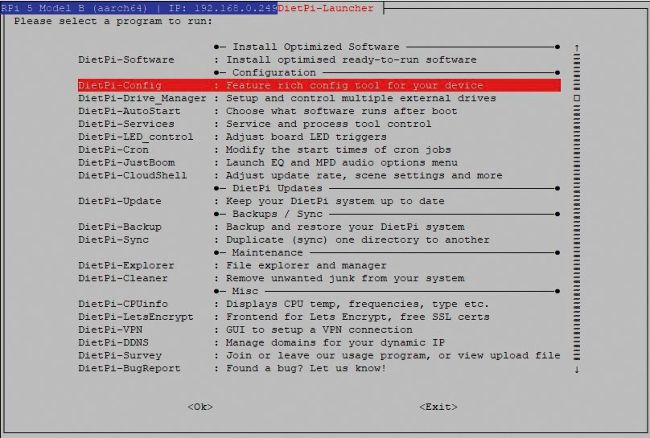Linux distro
Diet Pi v9.1
Feeling bloated, Les Pounder tries another Diet, but this is no fad – he is sticking with Diet Pi this time.

The Ncurses menu system may look a bit dated, but it can really help you to get things done – quickly.
Diet Pi, the low-resource Swiss army knife of distros, runs on anything, so it’s fitting that there D is a new alpha version for the Raspberry Pi 5.
After downloading the 170MB disk image – yeah, Diet Pi v9.1 is that small – we used Raspberry Pi Imager to write it to a microSD card. After the initial boot expanded the OS to use the card’s full capacity, we followed the Diet Pi setup screens. This can be done at the Pi, using a monitor, keyboard and so on. Or, we can follow the setup process over SSH – look for the Diet Pi machine on your network. The process involves configuring user accounts and choosing whether or not to disable a serial console.